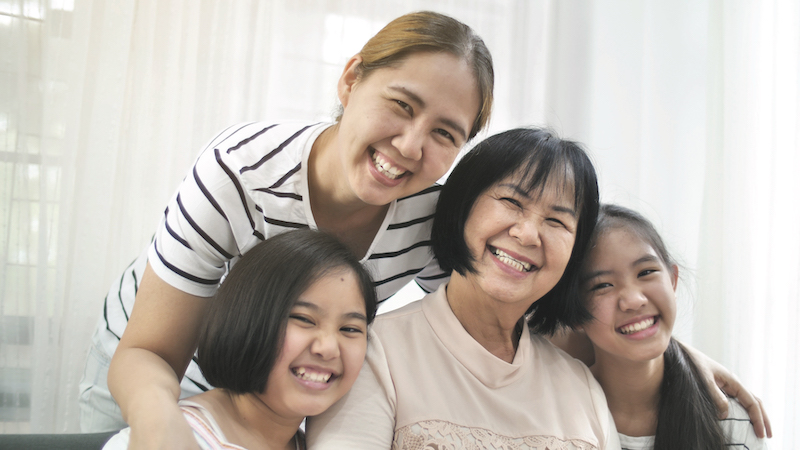News & Articles

Empowering Women to Beat Breast Cancer

Breast cancer accounts for 17.6% of cases of cancer in the Philippines, affecting nearly 25,000 individuals across the archipelago in 2018. The total number of breast cancer cases is estimated to increase by nearly double the number by 2040.
Speaking at a webinar hosted in partnership with Solis Breast Care & Surgery Centre and Santa Maria & Partners (AXA Philippines), breast surgeon Dr Chan Ching Wan shared how women across the region can take charge of their breast health.
Breast cancer is a disease that begins in the ducts and grows uncontrollably. While breast cancer is common in the Philippines, affecting approximately 1 in 6 individuals, it is a highly treatable disease when detected at an early stage, Dr Chan shared.
She explained that equipping ourselves with knowledge and information about breast cancer and general breast health is a key first step in protecting ourselves against the disease. To demonstrate, she debunked some common myths and misconceptions about the disease.The truth behind 10 common breast cancer myths
Myth: Breast cancer only happens at a certain age.
Fact: While the incidence of breast cancer increases with age, the disease affects individuals of all ages, from as young as their 20s to as late as their 80s.Myth: Only women get breast cancer.
Fact: While not as common, about 1 out of 1,000 cases of breast cancer are male. Causes are usually genetic.
Myth: All breast lumps are cancerous.
Fact: Most breast lumps are benign. Worrying signs of a cancerous lump include a persistent lump, a lump that is growing in size, changes in the breast tissue. In such a case, consult a doctor to conduct screening tests to get the lump(s) checked.
Myth: Breast cancer is painful.
Fact: Most pain in the breast is almost never related to breast cancer. This is because lumps on the breast do not have a nerve supply to generate any sensation of pain. As a result, many women may ignore painless breast lumps and mistake them as benign.
Myth: Nothing can prevent breast cancer.
Fact: Breast cancer is a highly preventable disease. Individuals can reduce their risk of breast cancer by:
a. Keeping a healthy weight
b. Exercising regularly
c. Limiting alcohol consumption
d. Smoking cessation
e. Having and early pregnancy (before age 30)
f. Having a few children
g. Breastfeeding for at least 6 months
Other factors such as hormone replacement therapy (HRT) can increase the risk of breast cancer. For women who require HRT to help with post-menopausal symptoms, we recommend taking it for no more than 5 years—but less, if possible—to reduce their risk of breast cancer.
Myth: Mammograms, consumption of dairy products, cosmetic implants, sugar and wearing underwired bras can cause breast cancer.
Fact: There is no evidence that radiation from mammograms, certain dietary habits, cosmetic implants and bras can cause breast cancer.
Myth: No one in my family has breast cancer, so I am safe.
Fact: 90% of breast cancer cases do not have a history of breast cancer. This is why regular screening is important in detecting the disease.
Myth: Breast cancer cannot be cured.
Fact: Breast cancer can be serious and fatal when left untreated. However, treatment can control the disease and prevent spread, especially when detected at early stages. Generally, the earlier the cancer is detected, the higher the survival rate.
Myth: Breast cancer treatment will destroy all my healthy cells.
Fact: Like many treatments, breast cancer treatment comes with side effects. However, advances in treatment techniques have enabled doctors to preserve the breast and reduce toxicity and morbidity. Furthermore, many of these side effects are temporary and can be managed effectively.
Myth: It is usually too late by the time breast cancer is found.
Fact: Breast cancer can be detected early with regular screening and awareness of general breast health. Even if the cancer is detected at a later stage, breast cancer is still a highly treatable disease.
What to look out for
Dr Chan advised women to carry out regular breast self-examination (BSE) monthly, about a week after menstruation—or every 2–3 months if you are post-menopause—to check for any changes in the breast. Women should look out for persistent hard lumps in the breast or armpit, discharge, rash or redness, change in shape or size of the breast, and any nipple inversion.
She also advised women to undergo regular mammograms and ultrasound based on the population screening age of their respective countries. With regular self-examination, screening and knowledge about breast cancer and general breast health, women can be empowered to take charge of their health and beat the big ‘C’.
| POSTED IN | Cancer Prevention |
| TAGS | breast cancer, cancer awareness, cancer self-examination, mammogram, misconceptions, reduce cancer risk |
| READ MORE ABOUT | Breast Cancer |
| PUBLISHED | 01 June 2022 |
